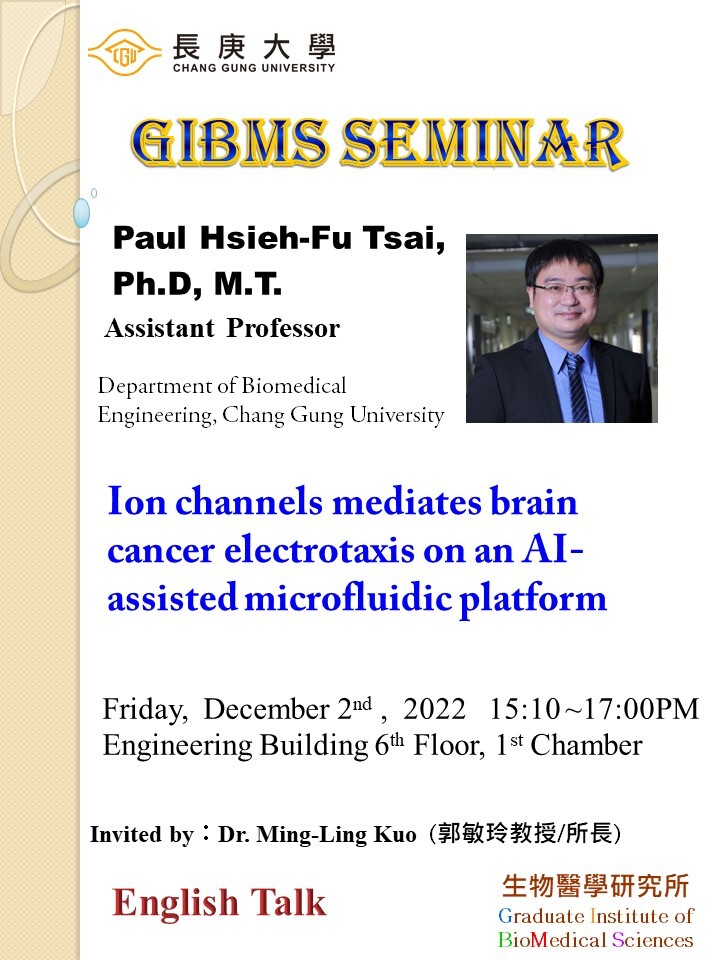2022 Fall GIBMS SEMINAR-20221202 ,Paul Hsieh-Fu Tsai Ph.D.
CV:https://bme.cgu.edu.tw/index.php?Lang=en

Abstract:
In biosystems, chemical and physical fields established by gradients guide cell migration, which is a fundamental phenomenon underlying physiological and pathophysiological processes such as development, morphogenesis, wound healing, and cancer metastasis. Cells in the supportive tissue of the brain, glia, are electrically stimulated by the local field potentials from neuronal activities. How the electric field may influence glial cells and its cancerous form (glioma) is poorly understood. To establish a reliable and robust in vitro experimental platform, we employed a hybrid microfluidic approach with advantages including flexible world-to-chip interface design and rapid prototyping. Furthermore, quantitative single cell tracking in label-free microscopy had been difficult and thus subjected to manual analysis, we developed a instance-aware deep learning pipeline for semiautomated segment, track, and analyze cell migration using only phase contrast microscope images. User validation functionality was built in to provide data reliability check by a human supervisor. Combining the two engineering advances, the platform was developed to study the significance of ion channels in influencing the migration of brain cancer cells in direct current electric field (electrotaxis).

